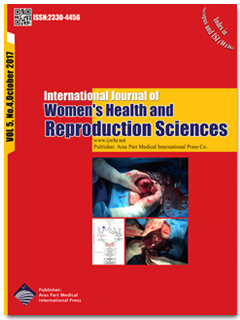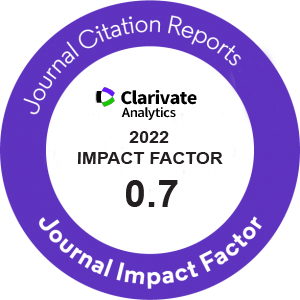| Original Article | |
| A Community Based Study on Menstrual Disorders Among the Rural Women of Reproductive Age | |
| Durai Vanitha, Shanthi Edward, Suresh Varadharajan, Muthuthandavan Anita Rani | |
| Department of Community Medicine, Sri Ramachandra Medical College and Research Institute, Sri Ramachandra University, Porur, Chennai, India | |
|
IJWHR 2017; 5: 270-276 DOI: 10.15296/ijwhr.2017.46 Viewed : 3969 times Downloaded : 5727 times. Keywords : Dysmenorrhoea, Health, Menstruation disturbances, Oligomenorrhoea |
|
| Full Text(PDF) | Related Articles | |
| Abstract | |
Objectives: Menstrual health is fundamental to women?s sexual and reproductive health. Changes in normal menstrual patterns of women in reproductive age group may affect physical and psychological well being. Materials and Methods: This cross-sectional study was conducted from August 2013 to January 2014 in rural villages of Poonamallee block, Thiruvallur district in Tamil Nadu. Ever married women of reproductive age group (15-49 years) were selected and interviewed on symptoms related to menstrual disorders using standard operational definition. Two stage cluster sampling was adopted. Results: Mean age of 330 participants was 34.1 years and 61% had completed high school. More women (76%) belonged to upper and middle socio-economic class. It was observed that 44.8% of women had at least one menstrual disorder. Dysmenorrhoea (22.7%) and oligomenorrhoea (12.1%) were more common. Education acted as a protective factor for menstrual disorders (P = 0.0214). Low socio-economic status women had 1.8 times greater risk of dysmenorrhoea (P = 0.044). Old age (P = 0.035), anaemia (P = 0.002) and educational level (P = 0.032) were associated with oligomenorrhoea. Among women with menstrual disorders, 25.67% sought health care. Majority did not seek care due to personal reasons, 36% did not know they had disorders and 40% did not worry about it. Conclusion: Almost half of rural women had menstrual disorders and very few sought health care. Majority of them did not seek care due to personnel reasons, this should be addressed. |
Cite By, Google Scholar
Google Scholar
PubMed
Online Submission System
 IJWHR ENDNOTE ® Style
IJWHR ENDNOTE ® Style
 Tutorials
Tutorials
 Publication Charge
Women's Reproductive Health Research Center
About Journal
Publication Charge
Women's Reproductive Health Research Center
About Journal
Aras Part Medical International Press Editor-in-Chief
Arash Khaki
Mertihan Kurdoglu Deputy Editor
Zafer Akan






















